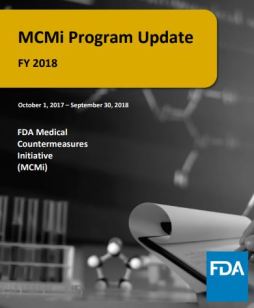Transition of FDA Leadership: Dr. Ned Sharpless as Acting Commissioner
Farewell to Commissioner Gottlieb




FDA and CBP bolster collaboration to protect public health and safety
FDA and CBP agreement to maximize inspection and detection capabilities
- Prevent illegal and harmful products entering International Mail Facilities and Ports of Entry
- Sharing of FDA’s advanced screening technology to identify trends in future entries
- Shared space and increased scientific presence at high-risk/high-volume facilities

Continued evaluation of potential regulatory pathways for cannabis-containing and cannabis-derived products
Products containing cannabis or cannabis derivatives marketed as human drugs, dietary supplements, conventional foods, animal foods/drugs, cosmetics
- Public hearing on May 31 to share experiences and challenges and product safety
- Formation of high-level internal agency working group on potential pathways for dietary supplements to be lawfully marketed
- Webpage on FDA’s requirements for these products
- Issuance of multiple warning letters to companies marketing CBD products with unfounded claims aimed at vulnerable populations

Treatment strategies for nicotine addiction and teen use of e-cigarettes
To address troubling epidemic of youth e-cigarette use
- Youth Tobacco Prevention Plan to ensure no tobacco products marketed to kids
- Enforcement actions on illegal sales
- Public education campaigns to warn youth
- Advanced new policies aimed at preventing youth access to flavored tobacco products, including e-cigarettes and cigars
- Workshop to examine science and treatment strategies for youth tobacco cessation
 A Risk-Based Approach to Monitoring of Clinical Investigations
A Risk-Based Approach to Monitoring of Clinical Investigations
Scope: identifying critical data and processes necessary for human subject protection,investigation integrity, risk assessment, specific monitoring plan
- Tailor monitoring plans to needs of investigation
- Factors to consider in developing monitoring plan
- Examples of monitoring methods and techniques
- Risk-based monitoring important tool to identify and address issue
Monitoring Approach: include information regarding identified risks and how monitoring methods will address those risks
Monitoring Plan Content: A detailed list
Follow-Up and Communication of Monitoring Results: Significant issues identified through monitoring with appropriate Corrective and Preventive Actions

Medical CounterMeasures (MCMs) update
FDA responsible for safety and effectiveness of MCMs—drugs, therapeutic biologics,vaccines, devices, such as diagnostic tests
- Smallpox preparedness: TPOXX for treatment of smallpox
- Chemical nerve agent preparedness: Atropine autoinjector for treatment of poisoning by susceptible organophosphorous nerve agents and Seizalam (midazolam intramuscular injection) for the treatment of status epilepticus
- Radiological/nuclear emergency preparedness: New indication for Leukine (sargramostim) to increase survival in acute exposure to radiation
- Viral encephalitis preparedness: IXIARO Japanese Encephalitis Virus Vaccine
- Zika protection: COBAS Zika to screen Zika virus in blood donations
- Pandemic influenza preparedness: FLUARIX Influenza Virus Vaccine

Finalized List of Accessories Suitable for Class I
For accessory to be eligible for class I distinct from another device if the accessory
- is not for use in supporting or sustaining human life
- does not represent potential unreasonable risk of illness or injury
- general controls sufficient for reasonable assurance of safety and effectiveness
 FDA OMH has a new name: FDA Office of Minority Health and Health Equity (OMHHE)
FDA OMH has a new name: FDA Office of Minority Health and Health Equity (OMHHE)
Reorganization reflects commitment to modernizing structure to:
- Advance mission to protect and promote public health
- Meet challenges of rapid innovation across industries regulated by FDA
- Better captures breadth of portfolio and continue to address needs of racial and ethnic minority populations and underserved communities
Image credit: FDA